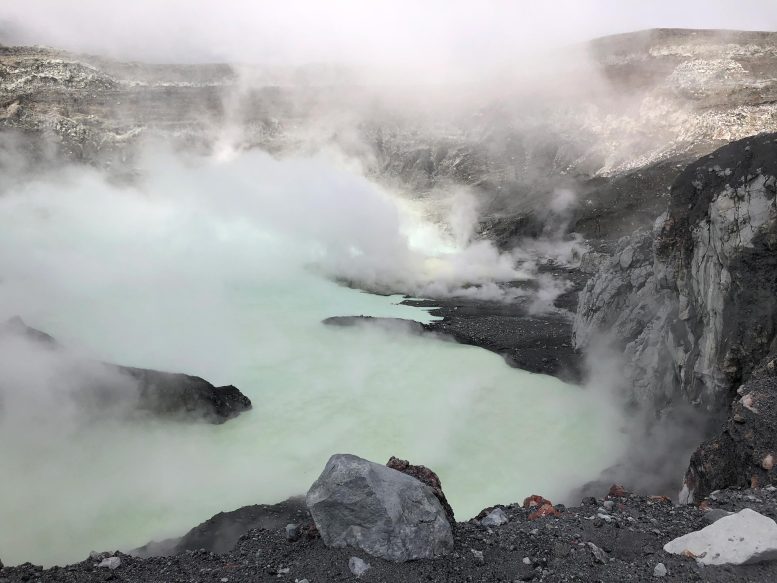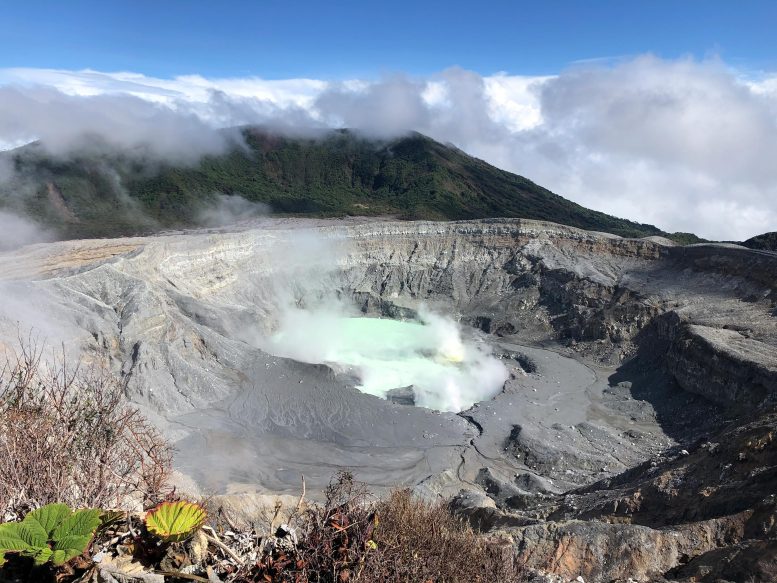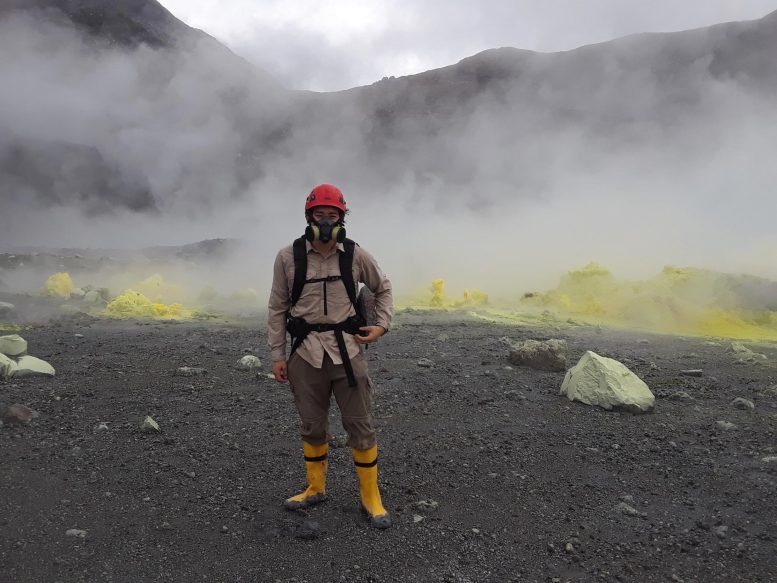Extraordinary Microbes Living in Extremely Harsh Volcanic Lake Show How Life Might Have

The extremely harsh Laguna Caliente lake in the crater of the Poás volcano, Costa Rica. Credit: Justin Wang
Lake is dominated by bacteria from a single ‘extremophile’ genus.
A few specialist microbes survive conditions analogous to those of 
The crater and its extremely harsh lake, Laguna Caliente, dominated by a single genus of extremophile Acidiphilium bacteria. Credit: Justin Wang
This current interdisciplinary collaboration follows up on prior work from 2013. At that time, the researchers found that there was just one microbial species coming from the Acidiphilium genus in the Poás volcanic lake. Unsurprisingly, this type of bacteria is commonly found in 
Fieldwork at Lagune Caliente lake in Poás volcanic lake, Costa Rica. Credit: Justin Wang
“We expected a lot of the genes that we found, but we didn’t expect this many given the lake’s low biodiversity,” says Wang. “This was quite a surprise, but it is absolutely elegant. It makes sense that this is how life would adapt to living in an active volcanic crater lake.”
Despite the oftentimes lethal surroundings, hydrothermal systems provide most of the key ingredients for the evolution of life, including heat, water and energy. This is why leading theories for both Earth and Mars focus on these locations. So far, previous efforts in search of life on Mars have focused on streambeds or river deltas, but the authors suggest that more attention should be given to the sites of past hot springs (which were present on Mars for billions of years).
“Our research provides a framework for how ‘Earth life’ could have existed in hydrothermal environments on Mars,” explains Wang. “But whether life ever existed on Mars and whether or not it resembles the microorganisms we have here is still a big question. We hope that our research steers the conversation to prioritize searching for signs of life in these environments, for example there are some good targets on the crater rim of Jezero Crater, which is where the Perseverance rover is right now.”
Reference: “Microbial Survival in an Extreme Martian Analog Ecosystem: Poás Volcano, Costa Rica” by Justin L. Wang, Nicholas B. Dragone, Geoffroy Avard and Brian M. Hynek, 28 January 2022, Frontiers in Astronomy and Space Sciences.
DOI: 10.3389/fspas.2022.817900
Read More: Extraordinary Microbes Living in Extremely Harsh Volcanic Lake Show How Life Might Have

